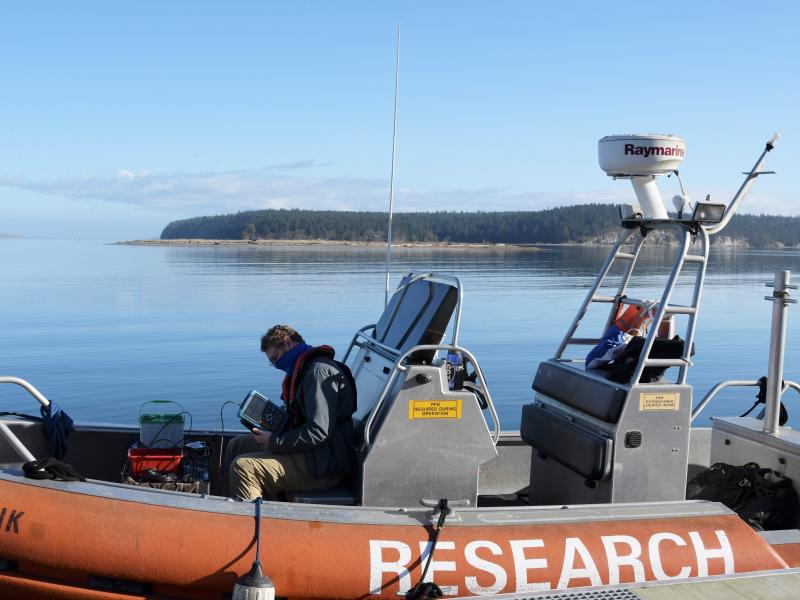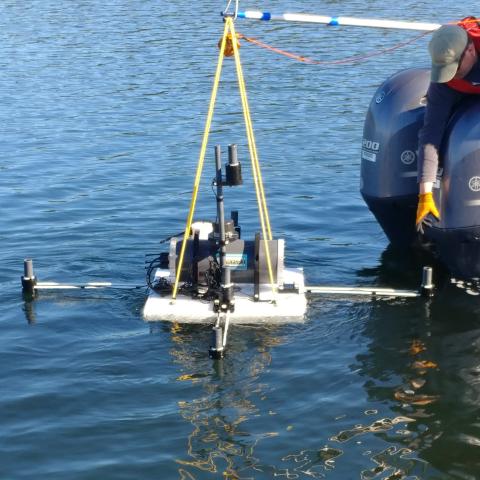
Woods Hole Oceanographic Institution EMF Detection

The Woods Hole Oceanographic Institution (WHOI) is modifying one of its deep-sea sensors designed to detect the Earth’s natural electromagnetic fields (EMF) for use in shallow waters to detect signatures from cables and underwater marine energy. WHOI is investigating the direct and indirect effects of marine renewable energy systems on electric and magnetic fields. Filling this knowledge gap is important because certain crustaceans, fish, marine mammals, and turtles use the Earth’s magnetic field for orientation and navigation. Additionally, many elasmobranchs, such as sharks and rays, may use electric field disturbances to locate prey and mates.
The WHOI-developed EMF detection system identifies the source, strength, and variation of EMFs to determine if devices create signatures that produce adverse effects in electrosensitive or magneto-sensitive animals. The system characterizes the electromagnetic environment of the sea floor around marine energy systems and uses data to model EMFs. This innovative instrument has the unique ability to measure vector (magnitude and direction) rather than just scaler quantities (magnitude only), allowing researchers to capture both direction and strength of EMFs and better model how EMFs propagate through the water column. This state-of-the-art technology is the only commercial source for oceanic electromagnetic instruments with electric field components.
After baseline testing in 2017, WHOI tested the device again in 2019 around an energized cable to successfully detect the signatures and worked with Triton engineers to help differentiate cable-sourced EMFs from magnetic fields in the ambient environment. The device was then compared to a commercially available towed magnetometer. The WHOI device demonstrated its ability to provide vector measurements, making it more dynamic than current commercial devices that provide scaler quantities. Recently, upgrades to the device have included making it smaller and improving the ease of deployment to the EMF sensor, including an acoustically activated buoy system that makes retrieval easier.
Final demonstration for the WHOI EMF detection system will be at the U.S. Navy Hawai'i Wave Energy Test Site where EMF will be monitored around the Ocean Energy 35 wave energy converter.

FOA project DE-EE0007825